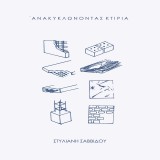Supervisor:
2021
The techniques of reusing and recycling building materials as alternatives for maintaining sustainability. Practices help to reduce the extraction through the preservation of supplies of raw materials, especially when the material is non-renewable. The starting point for the alternate concepts is the historical background, from ancient times to the present day, where the use was to serve housing purposes due to disasters and emergency conditions, but there is a connection with the preservation of folk traditions, the creation of aesthetic prototypes and strengthening sustainable development. Nowadays the need for environmental awareness is necessary. Taking into consideration the intervention amount of the construction industry into the environment, alternatives of construction waste management are presented, coming from demolition processes, as a new form of architectural design and construction. Among the practices, prevention stands out as the best waste management process, which is pursued from the first stages of architectural design (design for waste). At the same time, selective demolition with the waste material separation in the field of construction affects to the result of recycling. The application of the "new materials" is completed in the model of polykatoikia in order to avoid the rapid over-exploitation of the environment from pollution but also to achieve sustainability. Materials completing their life cycle are "reborn" with the same or different use. Reuse motivation, simple recycling techniques, green grants and knowledge of recycling waste are important.
